39 sas label statement
support.sas.com › documentation › cdlSAS/GRAPH Statements: SYMBOL Statement Label-description(s) can be used to change the variable whose values are used to label points, and to change features of the label text, such as the color, font, or size of the text. Note: If you do not specify a color on a SYMBOL statement, the symbol definition is rotated through the color list before the next SYMBOL statement is used. SAS/GRAPH Statements: SYMBOL Statement Label-description(s) can be used to change the variable whose values are used to label points, and to change features of the label text ... If you do not use color to limit a SYMBOL statement to a single symbol definition, SAS/GRAPH generates multiple symbol definitions from that statement by rotating the current definition through the color ...
support.sas.com › documentation › cdlODS OUTPUT Statement :: SAS(R) 9.3 Output Delivery System ... The ODS TRACE statement writes to the SAS log a trace record that includes the path, the label, and other information about each output object that is produced. For more information, see the ODS TRACE statement.

Sas label statement
LABEL Statement - SAS The LABEL statement specifies a label of up to 255 characters for parameters and other variables used in the model program. Labels are used to identify parts of the printout of FIT and SOLVE tasks. The labels will be displayed in the output if the LINESIZE= option is large enough. Chapter Contents Previous Next Top PROC FREQ: TABLES Statement :: SAS/STAT(R) 9.2 User's Guide, … For information about output presentation, see the SAS Output Delivery System: User's Guide. If you omit the CONTENTS= option, the contents label for crosstabulation tables is "Cross-Tabular Freq Table" by default. Note that contents labels for all crosstabulation tables that are produced by a single TABLES statement use the same text. SAS Help Center: label: Statement A statement label identifies a statement or group of statements that are referred to in the same DATA step by another statement, such as a GO TO statement. Example: Jumping to Another Statement In this example, if Stock=0, the GO TO statement causes SAS to jump to the statement that is labeled reorder.
Sas label statement. Change label in sas Mar 19, 2021 · In the example below we show how to add a temporary label to the variable Make from the CARS dataset. proc freq data =sashelp.cars; tables Make; run; Now we use the LABEL statement to add a temporary label to the Make variable. proc freq data =sashelp.cars; tables Make; label Make = 'Cars Make' ; run;. LABEL statement is not working? - SAS Support Communities This code is run after proc logistic. No errors in log but no label either. What is wrong here? Thank you. MM data pred; set pred; label stdresdev="StandardizedDevianceResiduals"; run; proc print; run; pred is created during a run of proc logistic. no errors in log. output out=pred predprobs=indiv... Effective Use of RETAIN Statement in SAS Programming We must make sure the RETAIN statement occurs before the SET statement. Consequently, the variables in the RETAIN statement are positioned first (leftmost) in the PDV and the output data set. CONCLUSION • We use the RETAIN statement when we want SAS to preserve a variable's value from the previous iteration of the DATA step. Macro Statements: %label Statement - SAS label. specifies a SAS name. macro-text. is a macro statement, a text expression, or constant text. The following examples illustrate each: ... %final: data _null_; Details: The label name is preceded by a %. When you specify this label in a %GOTO statement, do not precede it with a %. An alternative to using the %GOTO statement and statement ...
LABEL Statement :: SAS(R) 9.3 Statements: Reference Using a LABEL statement in a DATA step permanently associates labels with variables by affecting the descriptor information of the SAS data set that contains the variables. You can associate any number of variables with labels in a single LABEL statement. ... support.sas.com › documentation › cdlPROC FREQ: TABLES Statement :: SAS/STAT(R) 9.2 User's Guide ... For information about output presentation, see the SAS Output Delivery System: User's Guide. If you omit the CONTENTS= option, the contents label for crosstabulation tables is "Cross-Tabular Freq Table" by default. Note that contents labels for all crosstabulation tables that are produced by a single TABLES statement use the same text. 6.7 - Descriptive Labels | STAT 480 The LABEL statement can be placed either in a DATA step or directly in the PRINT procedure. When you place the LABEL statement in a DATA step, the label gets permanently affixed to the variable and therefore is available for all subsequent procedures. ... That is, instead of printing the variable no_vis, the LABEL statement tells SAS to print a ... SAS Help Center Base SAS Procedures. DATA Step Programming. DATA Step Programming for CAS. Data Set Options. Formats and Informats. Functions and CALL Routines. DATA Step Statements. Syntax Conventions for the SAS Language. Whatʼs New.
sasexamplecode.com › how-to-label-variables-in-sasHow to Label Variables in SAS - SAS Example Code In SAS, you can create a variable label with the LABEL statement. You can use this statement to assign one or more labels using 3 methods, namely a SAS DATA Step, the PROC SQL procedure, and the PROC DATASETS procedure. The exact syntax of the LABEL statement depends on the method of choice. SAS Help Center: LABEL Statement Using a LABEL statement in a DATA step permanently associates labels with variables by affecting the descriptor information of the SAS data set that contains the variables. You can associate any number of variables with labels in a single LABEL statement. You can use a LABEL statement in a PROC step, but the rules are different. Statements : Labels, Statement - SAS The LABEL statement assigns a descriptive label to a variable. A statement label identifies a statement or group of statements that are referred to in the same DATA step by another statement, such as a GO TO statement. Examples In this example, if Stock=0, the GO TO statement causes SAS to jump to the statement that is labeled reorder. Statements: LABEL Statement - 9.2 - SAS Using a LABEL statement in a DATA step permanently associates labels with variables by affecting the descriptor information of the SAS data set that contains the variables. You can associate any number of variables with labels in a single LABEL statement. You can use a LABEL statement in a PROC step, but the rules are different.
How to Label Variables in SAS (With Example) - Statology Notice that the output of proc contents now contains an extra column called label, which contains the labels for the three variables that we specified. Additional Resources. The following tutorials explain how to perform other common tasks in SAS: How to Normalize Data in SAS How to Replace Characters in a String in SAS
Lesson 1 : PROC SQL Tutorial for Beginners (20 Examples) Jan 30, 2016 · Difference between INOBS= and OUTOBS= INOBS controls how many records are read from the dataset and OUTOBS controls how many records are written. Run the following program and see the difference. Both returns different results. /* OUTOBS=Example*/ proc sql outobs=2; select age, count(*) as tot from sashelp.class group by age; quit; /* INOBS= …
Labeling | SAS Learning Modules Creating and using value labels Labeling values is a two step process. First, you must create the label formats with proc format using a value statement. Next, you attach the label format to the variable with a format statement. This format statement can be used in either proc or data steps.
LABEL Statement :: SAS/ETS(R) 13.1 User's Guide The LABEL statement assigns SAS variable labels to variables in the output data sets. You can give labels for any number of variables in a single LABEL statement. The default labels for variables depend on the file type. Extra-long labels ( > 256 bytes ) reside in the OUTCONT data set as the DESCRIPT variable.
Rename Statement: Variable vs Label? - SAS Support Communities Why original name come up under 'Label' when using Proc Contents (i.e., variable name becomes uncon ... the label should change. However, when you explicitly set the label for the variable (using a label statement) it is unchanged by a rename. Richard. 0 ... WHERE vs. IF, SQL vs. DATA step and more, presented by SAS' Mark Jordan (aka the SAS ...
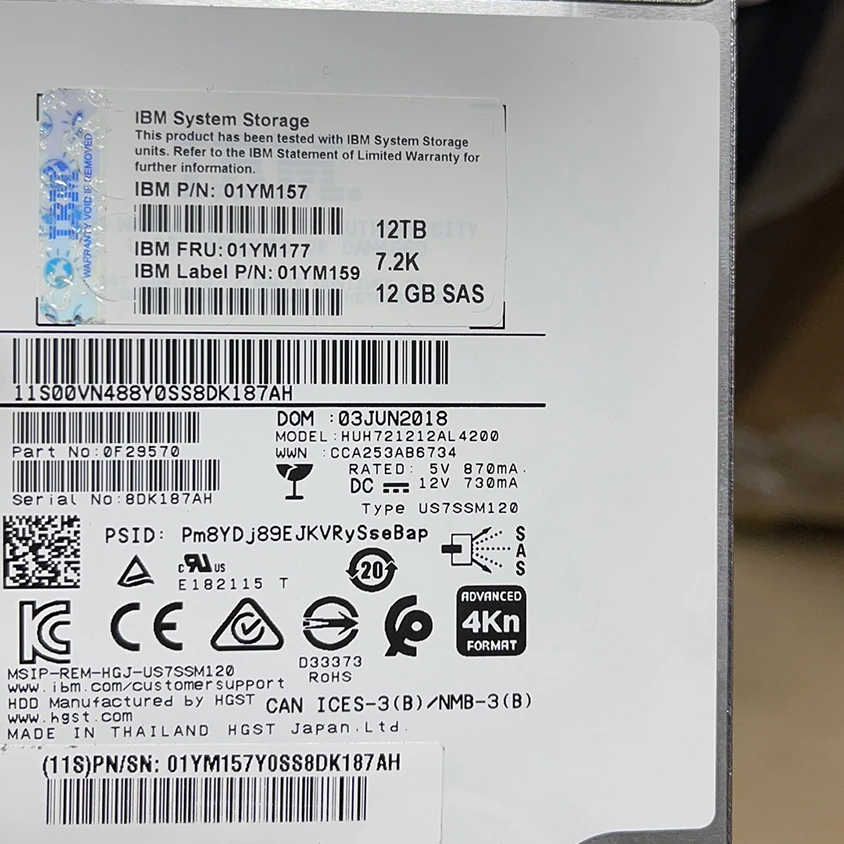
01ym177 01ym157 01yn159 Hard Drive Server 12t 7.2k 12g Sas 3.5 - Buy 01ym157,Server Hard Drive,01yn159 12t 7.2k 12g Sas 3.5 Server Hard Drive Product ...
Statements : ATTRIB - SAS OnlineDoc, V8 Here are examples of ATTRIB statements that contain. single variable and single attribute: attrib cost length=4; single variable with multiple attributes: attrib saleday informat=mmddyy. format=worddate.; multiple variables with the same multiple attributes: attrib x y length=$4 label='TEST VARIABLE';
SAS Help Center SAS® 9.4 DATA Step Statements: Reference documentation.sas.com. SAS® Help Center. Customer Support SAS Documentation. SAS® 9.4 and SAS® Viya® 3.5 Programming Documentation ... LABEL Statement. Label: Statement. LEAVE Statement. LENGTH Statement. LIBNAME Statement. LIBNAME Statement: CVP Engine.
label: Statement :: SAS(R) 9.3 Statements: Reference A statement label identifies a statement or group of statements that are referred to in the same DATA step by another statement, such as a GO TO statement. Example: Jumping to Another Statement In this example, if Stock=0, the GO TO statement causes SAS to jump to the statement that is labeled reorder.
'label' Statement - Boston University When a label statement is placed in a data step, the label stays with the variable for all subsequent procedures, unless relabeled. When placed in a procedure the label only stays attached to the variable for that procedure. Use double quotes if there is to be a single quote in the label. For example, label mombp="mother's systolic bld pressure";
support.sas.com › documentation › cdlSAS(R) 9.2 Language Reference: Dictionary, Fourth Edition Provides comprehensive reference information for the Base SAS language, which is available in all operating environments that support SAS. This document is organized by data set options, formats, functions and CALL routines, informats, statements, system options, and component options.
Sas put statement within a variable ( foo denotes that an output. ERROR Statement. Although the ERROR statement implies that is like the PUT statement. Details. The ERROR statement sets the automatic variable _ERROR_ to 1 and, optionally, writes a message that you specify to the SAS log. When. _ERROR_ = 1, SAS writes the data lines that correspond to the current.
40 Most Common SAS Statements, Functions and Procedures Function: set conditional statement to execute different functions. 9. Keep, drop statement. Function: to keep only the variables needed in the data set. 10. Merge statement. Function: to merge multiple data set into one. III. SAS Statements.
› 2014 › 04Lesson 1 : PROC SQL Tutorial for Beginners (20 Examples) Jan 30, 2016 · SAS-defined formats can be used to improve the appearance of the body of a report. You can also label the variables using LABEL keyword. options label; proc sql; select weight FORMAT= 8.2 , married Label =" Married People" from mylib.outdata; Quit;
The FSEDIT Procedure : LABEL Statement - SAS You must specify the LABEL option in the PROC FSEDIT statement in order for fields in the FSEDIT window to be identified with labels rather than with variable names. Thus, the LABEL statement is useful only in conjunction with the LABEL option. Reminder:
SAS Help Center: LABEL Statement Label statements can be used in a DATA step and within some PROC steps. If a label is assigned to a variable in a DATA step or in PROC DATASETS, the label is permanently assigned in the output data set descriptor. Some PROCs, such as PROC PRINT, can temporarily associate a label with a variable for use during the procedure.
Sas label multiple variables Sas sgplot no legend label Sas sgplot no legend label New with SAS® 9 New SG procedures such as Proc SGPLOT • A new Graphics Template Language (GTL) • In SAS 9 If you only want to change the legend text labels and. How it works : 1. First step, it is required to sort the variables 'ID' 'time' before using them in BY statement in PROC ...
Statements: LABEL Statement - 9.2 - SAS Using a LABEL statement in a DATA step permanently associates labels with variables by affecting the descriptor information of the SAS data set that contains the variables. You can associate any number of variables with labels in a single LABEL statement. You can use a LABEL statement in a PROC step, but the rules are different.
blogs.sas.com › content › imlAdd horizontal and vertical reference lines to SAS graphs ... Apr 13, 2020 · You can also use the BLOCK statement to show the cholesterol ranges. Reference lines at computed locations. Sometimes the reference values are the result of a computation. The REFLINE values and the LABEL= option can come from variables in a SAS data set. For multiple values, you probably want to arrange the values in "long form."
Add horizontal and vertical reference lines to SAS graphs: The … Apr 13, 2020 · You can also use the BLOCK statement to show the cholesterol ranges. Reference lines at computed locations. Sometimes the reference values are the result of a computation. The REFLINE values and the LABEL= option can come from variables in a SAS data set. For multiple values, you probably want to arrange the values in "long form."
Statements : LABEL - SAS Using a LABEL statement in a DATA step permanently associates labels with variables by affecting the descriptor information of the SAS data set that contains the variables. You can associate any number of variables with labels in a single LABEL statement. You can use a LABEL statement in a PROC step, but the rules are different.
How to Label Variables in SAS - SAS Example Code Mar 19, 2021 · In SAS, you can create a variable label with the LABEL statement. You can use this statement to assign one or more labels using 3 methods, namely a SAS DATA Step, the PROC SQL procedure, and the PROC DATASETS procedure.
ODS OUTPUT Statement :: SAS(R) 9.3 Output Delivery System: … By default, the ODS OUTPUT statement puts all output objects that have the same output-path into one SAS data set, regardless of any conflicting variables in the output objects. Variables created by a later output object will get a value of missing in the observations created by the earlier output object.
PROC PRINT Statement - SAS PROC PRINT sometimes conserves space by splitting labels across multiple lines. Use SPLIT= in the PROC PRINT statement to control where these splits occur. You do not need to use LABEL if you use SPLIT=. Tip: To create a blank column heading for a variable, use this LABEL statement in your PROC PRINT step: label variable-name ='00'x; See also:
PROC FREQ: TABLES Statement - SAS For information about output presentation, see the SAS Output Delivery System: User's Guide. If you omit the CONTENTS= option, the contents label for crosstabulation tables is "Cross-Tabular Freq Table" by default. Note that contents labels for all crosstabulation tables that are produced by a single TABLES statement use the same text.
SAS Help Center: label: Statement A statement label identifies a statement or group of statements that are referred to in the same DATA step by another statement, such as a GO TO statement. Example: Jumping to Another Statement In this example, if Stock=0, the GO TO statement causes SAS to jump to the statement that is labeled reorder.
PROC FREQ: TABLES Statement :: SAS/STAT(R) 9.2 User's Guide, … For information about output presentation, see the SAS Output Delivery System: User's Guide. If you omit the CONTENTS= option, the contents label for crosstabulation tables is "Cross-Tabular Freq Table" by default. Note that contents labels for all crosstabulation tables that are produced by a single TABLES statement use the same text.
LABEL Statement - SAS The LABEL statement specifies a label of up to 255 characters for parameters and other variables used in the model program. Labels are used to identify parts of the printout of FIT and SOLVE tasks. The labels will be displayed in the output if the LINESIZE= option is large enough. Chapter Contents Previous Next Top

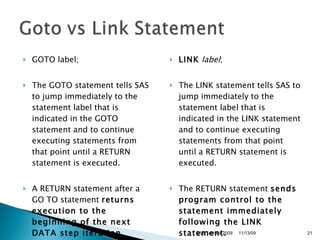




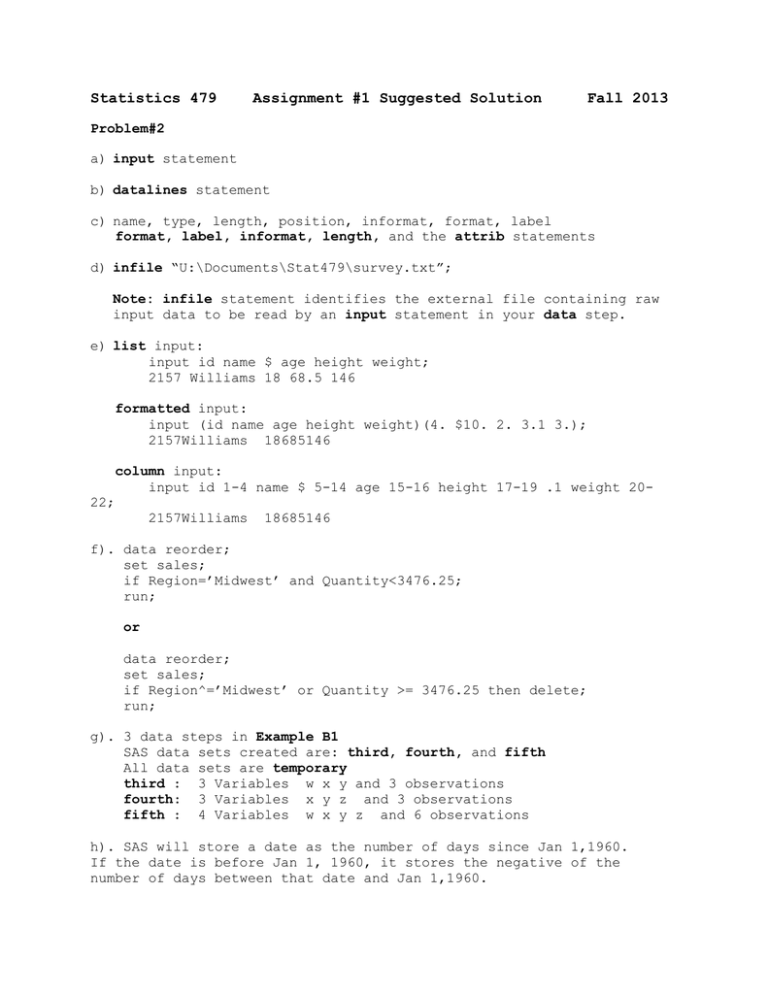

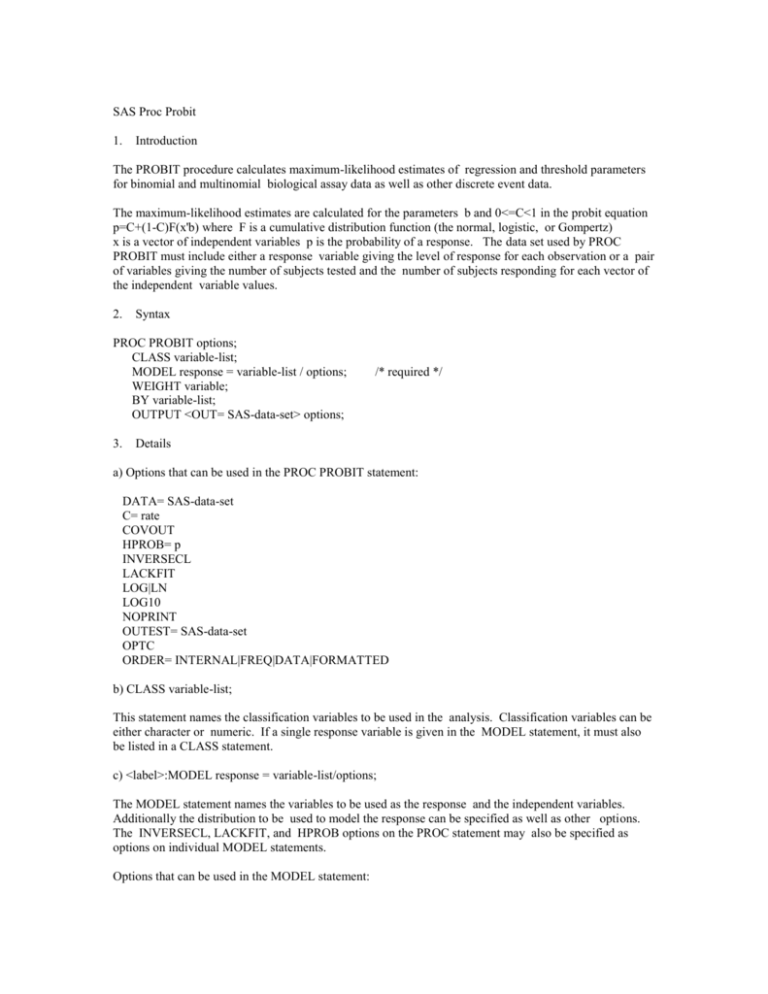
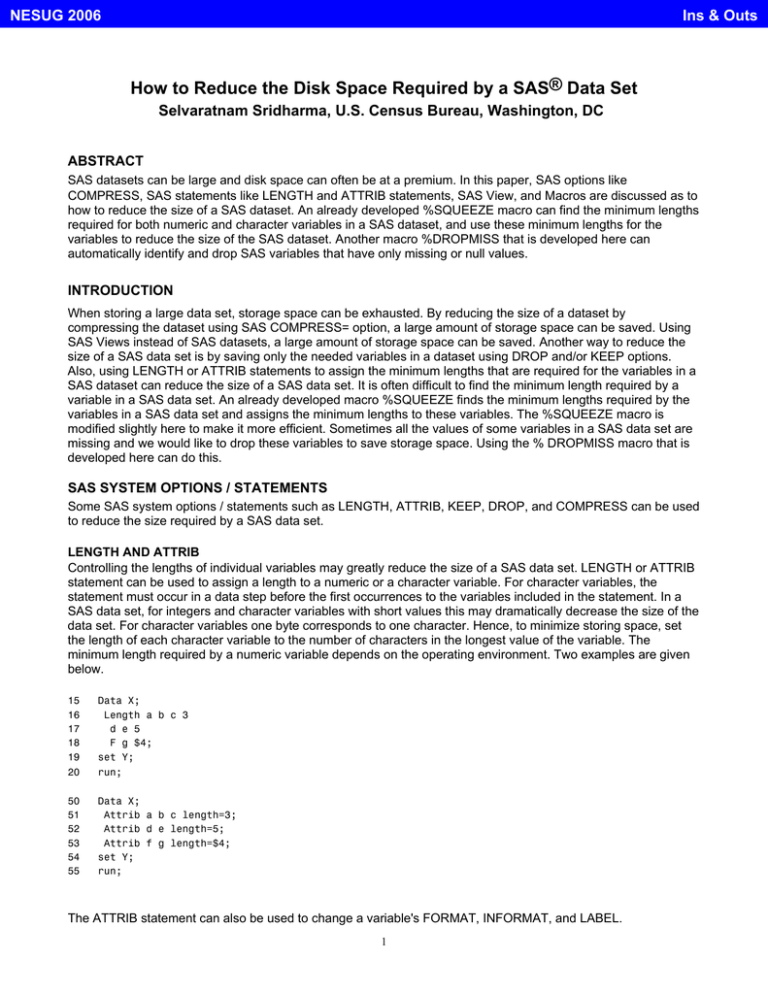

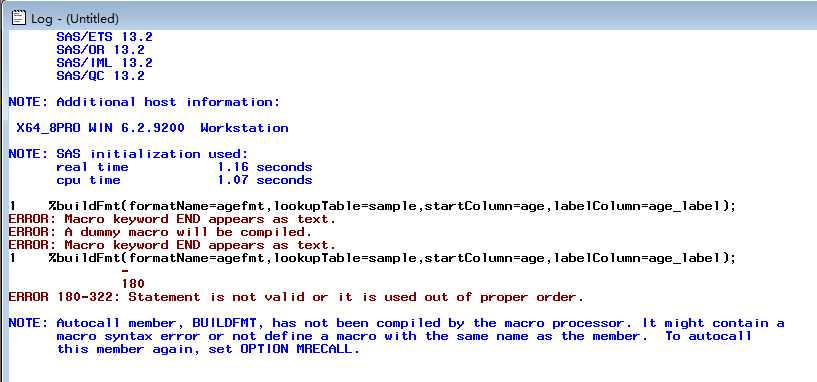


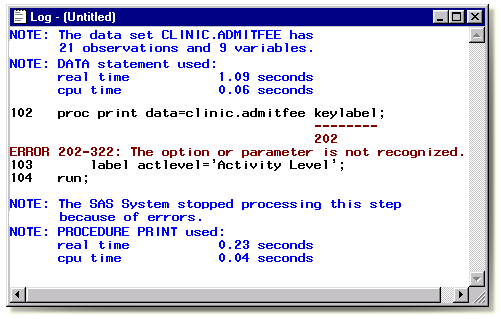
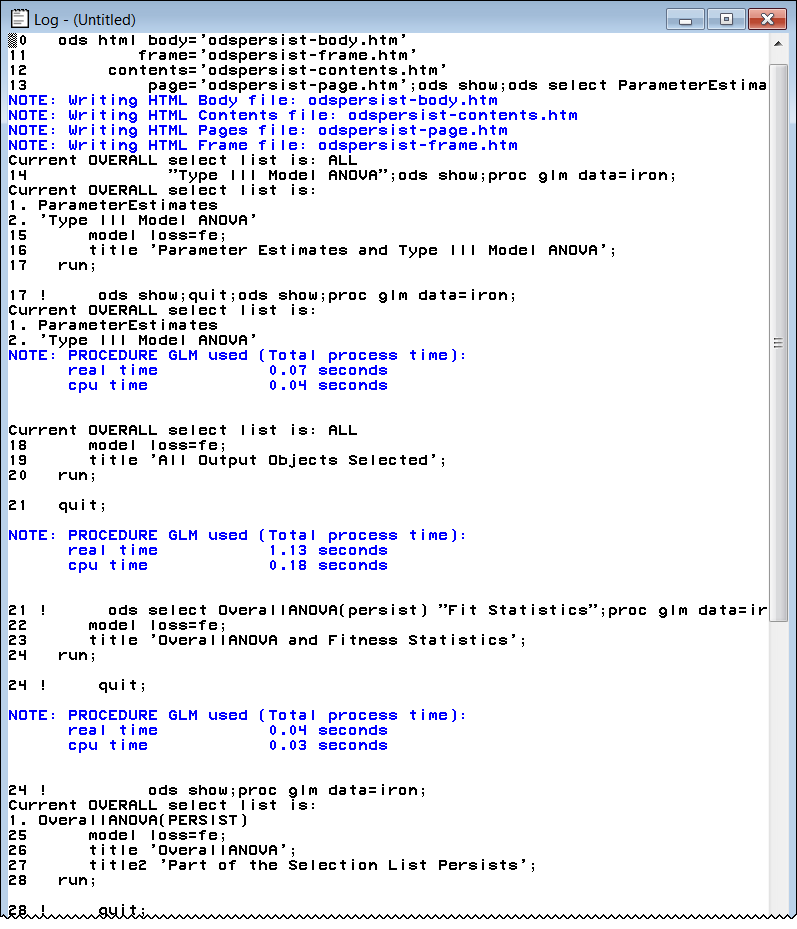


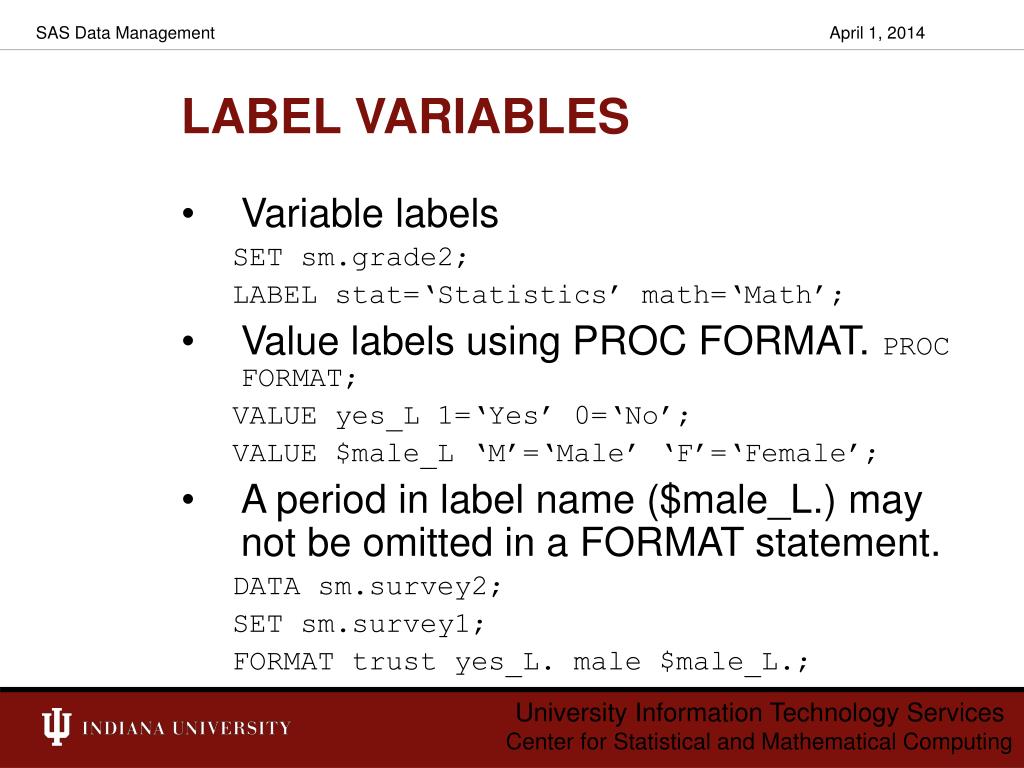

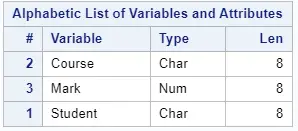



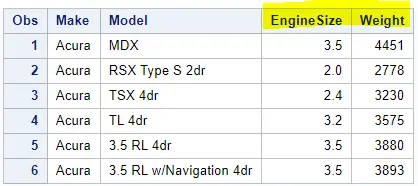

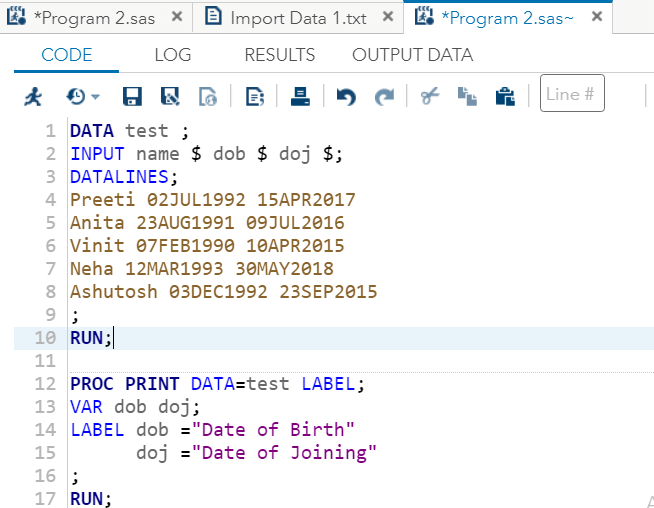


Post a Comment for "39 sas label statement"